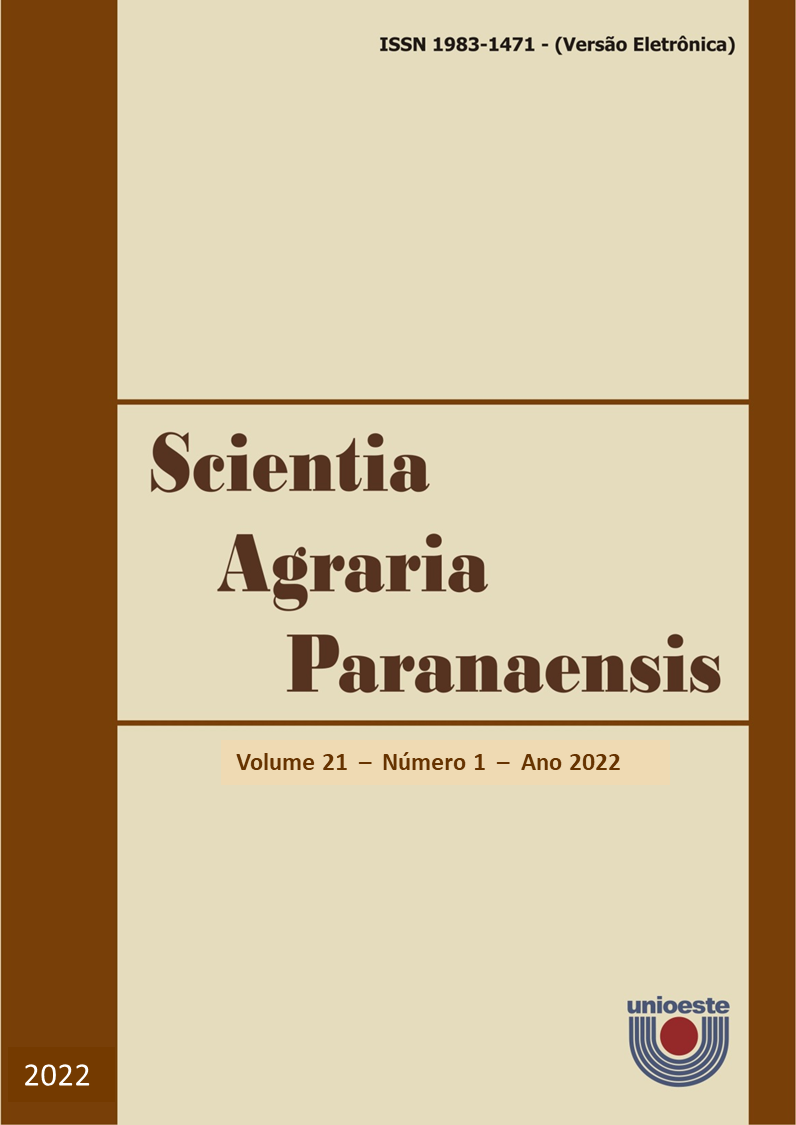Light intensity and giberelic acid in the seedling\production of four ornamental species
DOI :
https://doi.org/10.18188/sap.v21i1.27565Résumé
Ornamental species, especially those involving the use of seedlings in trays to serve residential gardens, need to be produced quickly for commercialization, which requires studies that provide such a condition. The present work aimed to evaluate the effect of light intensity and exogenous application of gibberellin on seedlings of four ornamental species (Calendula officinalis, Gypsophila elegans, Solenostemon scutellarioides and Viola wittrockiana). The experiment was carried out at the Universidade Tecnológica Federal do Paraná, Campus Dois Vizinhos. The seeds were sown in trays containing substrate composed of a mixture of humic Distroferric Red Latosol: medium texture sand: commercial substrate, in the volumetric proportion of 2:1:1, respectively. The trays were kept in shading environments, using black screens with 35%, 50% and 80% shading intensity, red with 35% shading, in addition to full sun. After 30 days of emergence, gibberellic acid solution was applied to the seedlings at concentrations of 0 mg L-1 and 300 mg L-1. Emergence, emergence speed index, mean emergence time, total length, shoot and roots, number of leaves, leaf area, root volume density, shoot, root and total dry matter were evaluated. For each environmental condition of cultivation, the values of temperature and air humidity and light intensity were obtained. The use of gibberellic acid proved to be beneficial for Viola wittrockiana and Solenostemon scutellarioides. The shading environments, regardless of color and light intensity, were more favorable for the formation of seedlings of these four ornamental species.
Téléchargements
Publié-e
Comment citer
Numéro
Rubrique
Licence
Aviso de Direito Autoral Creative Commons
Política para Periódicos de Acesso Livre
Autores que publicam nesta revista concordam com os seguintes termos:
1. Autores mantém os direitos autorais e concedem à revista o direito de primeira publicação, com o trabalho simultaneamente licenciado sob a Licença Creative Commons Attribution que permite o compartilhamento do trabalho com reconhecimento da autoria e publicação inicial nesta revista.2. Autores têm autorização para assumir contratos adicionais separadamente, para distribuição não-exclusiva da versão do trabalho publicada nesta revista (ex.: publicar em repositório institucional ou como capítulo de livro), com reconhecimento de autoria e publicação inicial nesta revista.
3. Autores têm permissão e são estimulados a publicar e distribuir seu trabalho online (ex.: em repositórios institucionais ou na sua página pessoal) a qualquer ponto antes ou durante o processo editorial, já que isso pode gerar alterações produtivas, bem como aumentar o impacto e a citação do trabalho publicado (Veja O Efeito do Acesso Livre).
Licença Creative Commons
Esta obra está licenciada com uma Licença Creative Commons Atribuição-NãoComercial-CompartilhaIgual 4.0 Internacional, o que permite compartilhar, copiar, distribuir, exibir, reproduzir, a totalidade ou partes desde que não tenha objetivo comercial e sejam citados os autores e a fonte.


